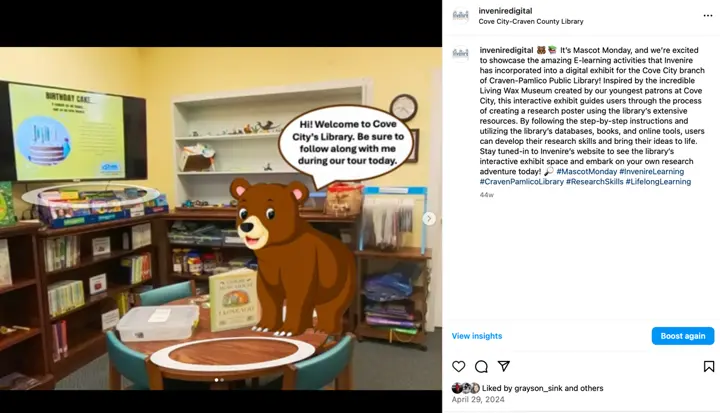Bringing Museum Magic into Your Classroom: A Teacher's Guide to Virtual Field Trips

“Ms. Molina, can we go back to The Country Doctor Museum?" This enthusiastic request came from my third-grade students the day after our virtual field trip through Invenire. As a teacher in a rural community, physical field trips are often limited by budget constraints and distance, but digital museum experiences are opening new doors for my classroom.
Here's my quick guide to making the most of virtual museum visits with your students:
Before the Virtual Visit
- Preview the content yourself. Invenire exhibits include age recommendations, but nothing beats your own assessment of what will engage your specific students.
- Connect to curriculum. Beary's lesson on how to find books for the “Living Wax Museum” correlated perfectly with our first research-focused project. Look for these natural curriculum connections.
- Prepare students with background knowledge. A quick overview of a library's function or subject matter helps students make connections during the virtual visit. Remember, not every student has visited a large-scale, community library.
During the Virtual Visit
- Encourage active exploration. Unlike a traditional video, Invenire exhibits are interactive. Give students time to click, explore, and discover at their own pace. For the “Cove City Library” exhibit space, students were quick to notice their “Living Wax Museum” on display!
- Incorporate the E-learning questions into your lesson plan or as a fun game. I give students 3-5 to explore the exhibit on their own. And then we start talking about the questions. This maintains focus without over-structuring the experience.
- Allow for collaboration. My students love to share discoveries with each other. If time and supplies allow, pair students together to complete Invenire's “hands-on” activities.
After the Virtual Visit
- Incorporate hands-on activities. Many Invenire exhibits include downloadable activities. The “find your own book” activity from the Cove City library branch was a huge hit in my classroom!
- Connect to writing. Virtual library visits provide excellent inspiration for creative ideas and new inspirations for student projects. Check out the “From Home” sources and activity centers included after the exhibit.
- Expand with research. Students often become curious about specific topics or historical details. These curiosities make perfect launching points for research projects.
The beauty of virtual field trips is their flexibility. You can visit for 15 minutes at the end of a lesson or devote an entire class period to exploration. You can return multiple times without additional cost. You can differentiate by allowing students to explore different exhibits based on reading level or interest.
With Invenire's expanding collection of small museum and library exhibits, my students are discovering history, science, and culture from institutions they might never have the opportunity to visit in person. These virtual experiences aren't replacing physical field trips—they're expanding our classroom horizons in exciting new ways.